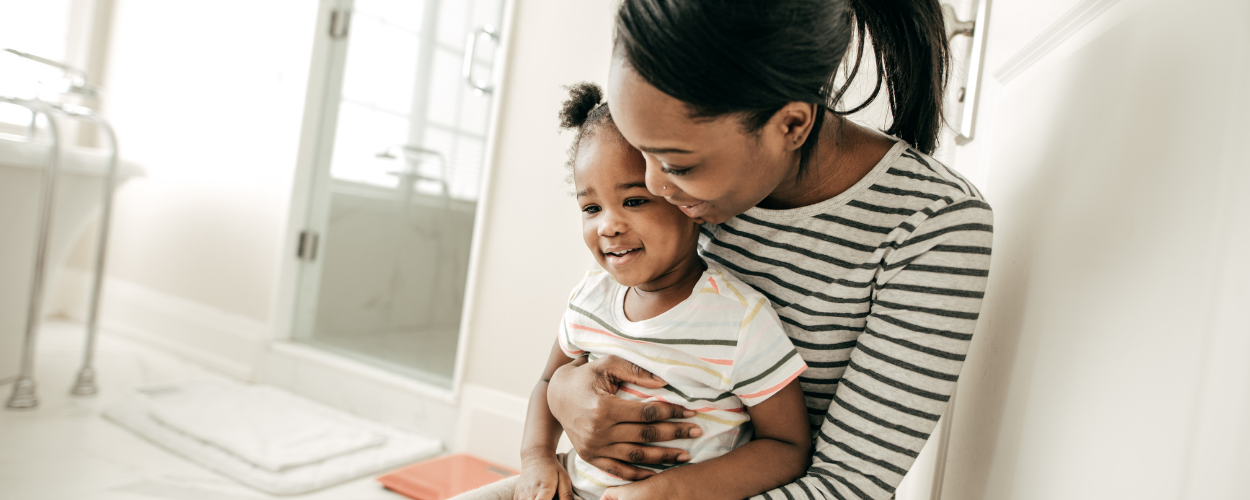Yay! Your baby is here! They have arrived and you get to see your little one for the first time. You may notice a few things, however, that you may not be expecting (unique baby characteristics).
The weird, but totally normal, newborn traits:
Purple coloring

In the moments after birth, your newborn may appear red to purple in color. Once the baby begins breathing independently, the color will brighten up to a more reddish tone. As the days progress, the color will progress to a more normal skin color. Hands and feet may remain a deeper, blue/purple color for several days.
Dermal melanocytosis, previously known as Mongolian spots, are blue-gray spots found on the buttocks, back, base of spine, or shoulders and are most common in babies of Asian, Native American, Hispanic, East Indian, and African descent. These spots have normal skin texture, and irregular edges, and will fade over the coming years. It is important to note that dermal melanocytosis is a birthmark and not bruising, as it can often be mistaken as such.
Things to know about your newborn's body hair

At about 14 weeks gestation, babies develop a soft layer of body hair, called lanugo, to help keep their bodies warm until they begin to develop more fat around 30 weeks gestation. Your baby may still have lanugo present at birth, particularly around the shoulders, back, forehead and ears. It typically goes away within the first several weeks after birth.
The baby head shape: A unique characteristic

Depending on how your baby was born (cesarean birth, vaginal birth, the length of time spent pushing) you may notice that your baby has a cone-shaped head. The shape will progress to a more round shape in the coming days of life. This happens because your baby’s body is quite ingenious. The bony plates of the skull are not yet fused together.
During birth, they overlap to allow the head to fit through the birth canal and pelvis, causing the coned appearance. If the baby spends more time in the birth canal, the coning may be more pronounced. If the baby was sunnyside up, posterior, the coning may present more to the front of the head rather than the back of the head.
Crossed eyes

Your newborn's eyes will appear to be crossed for about 2 to 3 months. While they can see at birth, they cannot see well. Vision will be out of focus for some time and the distance they can see is quite close to them, about as far as the distance between them in your arms and your face. As their eyesight develops more, they will begin to appear less cross-eyed.
What to know about newborns with no tears

Your newborn is born with a very healthy cry and will use it frequently but, you'll notice no tears. That’s because their lacrimal glands are not fully developed until around 2 weeks. They will produce tears around 1 to 3 months of age.
Long nails

Your baby began to develop fingernails around 12 weeks in utero and may have long nails at birth. You can trim long nails with a baby nail file to prevent them from scratching their face.
Weird things babies do: The startle reflex

The startle, or Moro reflex, is an automatic response to something jarring. Your baby will shoot their arms and legs out quickly and back into their body. Loud noises, including their own cries, sudden temperature shifts, and movements can cue a Moro response in your baby. It’s one of those weird things newborns do, but they typically outgrow this response around 2 months of age.
Swollen genitalia and chest

At birth, you may notice that your newborn's genitals are swollen. This includes the labia for female infants and the scrotum for male infants. They may appear to have swollen breast tissue as well, due to the surge in estrogen hormones that the baby receives from the birth parent during pregnancy. Some infants may even express some milk from their chests. There is no need for special care and will resolve within weeks.
A type of baby characteristic: Mini periods

Newborn girls may also appear to have a mini period. You may notice a small amount of red blood in their diaper. Again, this is due to estrogen during gestation. It will pass within a couple of days.
You may also notice a small amount of “brick dust” redness in wet diapers, for both boys and girls. This is due to uric acid crystals in the very concentrated urine and will go away in 5 to 6 days after birth.
Other baby facts & characteristics are erections

Baby boys get erections, typically before they pee. This is normal, and can even give you a little heads up during a diaper change that the baby may pee.
Newborns don't have black poop. Do they?

A newborn’s first bowel movement consists of a black sticky substance called meconium. Meconium lasts for a couple of days and will transition to a more yellow color as baby begins to feed on milk (either breastmilk or formula).
Top baby facts & characteristics conclusion
Having a newborn can be full of surprises! Hopefully, this list of a few of the unexpected things that occur during birth and the immediate newborn phase can help ease your mind and prepare you.
If anything feels off, abnormal, or concerning, please contact your pediatrician immediately for further information and assessment.
By: Erin Pasquet
Birth and Postpartum Doula
Childbirth Educator
Certified Lactation Counselor
Pre/Post Natal Yoga Teacher



